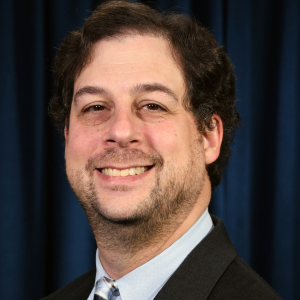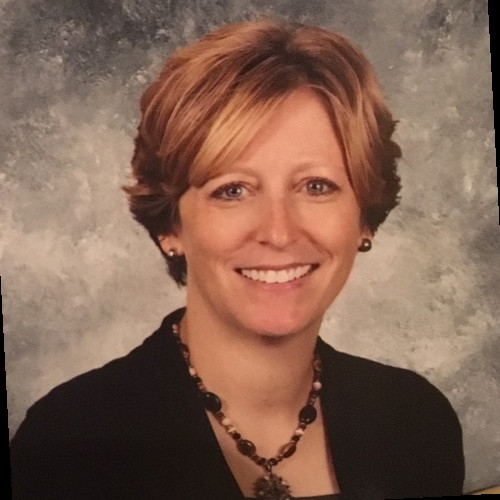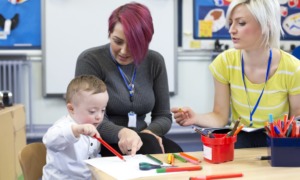
Lightspring/Shutterstock
.
From the time she adopted Anthony, at age 4, Wendy Tonker knew he was special.
He was special because he was diagnosed with autism, ADHD and an intellectual disability.
Anthony, now 21, has been enrolled in Durham Public Schools’ (DPS) Exceptional Children Services (EC) program since elementary school.
“I have been fighting with DPS EC for a decade now,” Tonker said. “They have horrifically underserved my son.”
Not all students process information identically, respond to their environments the same way or can control their behavior with the same restraint. Yet they are held to the same standard punishment system in school.

Office of Juvenile Defender
Eric Zogry
“Someone who might have an attention deficit disorder and can’t stay still is standing up in class, walking around and is distracting the teacher; that person could be charged with disorderly conduct at school just from the definition of the law,” said Eric Zogry, with the North Carolina Office of the Juvenile Defender.
People have long been aware of the disproportionate racial divide that plagues the juvenile justice system, but not until the last several years has concern been raised about the issue of alleged offenders with a disability.
This situation often escalates, explains Zogry, when a school resource officer gets involved and, while trying to calm the student down, puts his hand on them. In response, the student pushes the officer away and is charged with assaulting a law enforcement officer.
“It often starts with something that could have been addressed more efficiently and carefully and then escalates to what turns out to be a crime and then suddenly there is disciplinary response and then they are dragged into another system — the juvenile justice system,” Zogry said.
Even if the student is not charged, they are most likely suspended.

Kristin Bell
There’s been attention paid to the disproportionate suspension of students with disabilities in DPS for several years, said Kristin Bell, executive director of Exceptional Children Services in DPS, but the question of when the school administration will adequately address the issue remains unanswered.
In the 2009-10 school year, 17% of all students with disabilities in the Durham Public School (DPS) system were suspended, compared with 8.4% of students without disabilities. This was a factor that prompted the Advocates for Children’s Services of Legal Aid of North Carolina to file a complaint against DPS with the U.S. Department of Education’s Office for Civil Rights (OCR) in 2013.
The complaint was filed partly on the grounds that DPS’ out-of-school suspension system violated Section 504 of the federal Rehabilitation Act of 1973. This section of the act protects people with disabilities from discrimination in programs funded by federal government.
In 2018, DPS entered into an agreement with the OCR to adopt restorative practices and submit suspension data reports to them.
“A lot of work in Durham has been done since that report,” Bell said. “It’s not a perfect system, but we are working on restorative practice approaches for all students [so] that suspension isn’t the automatic go-to necessarily; [so] that there are other tools and options that administrators and teachers have to intervene with problem behaviors before we get to suspension.”
Review, adjustment, reentry
The protections for students with disabilities come under the Individuals with Disabilities Education Act (IDEA) and the state’s code of conduct. After a student with a disability has been suspended for 10 full days, a team reviews the student’s Individualized Education Program (IEP) and asks whether their behavior was a manifestation of their disability or not. They then look for a correlation between the behavior and what’s in the student’s IEP.
If the behavior was associated with the student’s disability, they are allowed to go back to school the following day. If not, they are held to the same standard as other students and finish out the remainder of their suspension.
If the behavior was associated with the student’s disability, the team adjusts the student’s Behavior Intervention Plan (BIP) with new strategies that are intended to prevent the student from being suspended repeatedly for the same behavior. A BIP’s goal is to inform teachers and faculty working with the student of ways to deal with certain actions and to be proactive about making sure larger infractions do not occur.
“We don’t want the student to be continually suspended for the same behaviors,” Bell said. “And we know that’s a manifestation their disability is contributing to this significantly … that could impact the student in a social emotional way that could be damaging.”
Once it is determined that the child can return to school, reentry strategies have to be worked out. Bell explains that students are encouraged to think of reentry as a fresh start and not carry the past situation back into the classroom.
Zogry agrees that in order to end the cycle of suspensions for students with disabilities, administrations need to make sure they are not sending a student right back into the same situation — likely leading to another suspension or at the very least, more disruption.
Zogry worked with a child with ADHD about 20 years ago who had pushed a teacher — a high-level misdemeanor. The child was put in a long-term youth development center for six months. He was then released and sent back to the same school with the same teacher who he had allegedly pushed. The child said the teacher had pushed him first.
“All they did was send him to an institution, release him, and put him right back in the same situation,” Zogry said.
How DPS program works
DPS’ EC department follows the IDEA guidelines so has 14 categories or areas in the program: autism, deaf-blindness, deafness, developmental delay, emotional disability, hearing impairment, intellectual disability, multiple disabilities, orthopedic impairment, specific learning disability, speech or language impairment, traumatic brain injury or visual impairment including blindness.
Entering the program begins with a referral for evaluation from a parent noticing their child is struggling, or through the school when they pick up on certain behaviors or from an outside source such as a doctor.
Once the referrals and data are collected around the student, an IEP team from the school and parents meet to determine if there is enough data to suggest the child has a disability that warrants an evaluation, Bell said.
As there are different evaluations for all 14 areas, the team uses collected data to narrow down which categories the child needs to be evaluated for, once given parent consent. Once the evaluations are completed the team answers three questions.
“One, do they meet the criteria for one of those 14 areas or more? Secondly, is there an adverse impact on the student’s educational performance? And thirdly, is there a need for a specially designed instruction because of that?” Bell said.
If the answer to all these questions is yes, then the team creates an IEP for the student and they are admitted into EC.
Zogry points out that issues with punishment systems and students with disabilities often start at this stage — with misdiagnosis or lack of support.
“Part of the problem is people aren’t being diagnosed, or they are underdiagnosed and are not being given the proper support that would prevent the situation in the first place — or a lack of training for the kids,” he said.
EC at DPS centers around the belief that special education should be structured in the least restrictive way possible, giving its students access to normal classroom environments when applicable.
“The least restrictive environment practice is really to ensure that to the maximum, and kind of part of the language of law, to the maximum extent appropriate, students will be educated with their nondisabled peers, and that we have an obligation to provide them support in that environment with their nondisabled peers,” Bell said. “So that they can be successful before we need to talk about that and attempt to do that before we remove them for pullout instruction or separate instruction.”
Prematurely pulling students out of normal classrooms is equivalent to making assumptions about what a child can and cannot do, she said. She emphasized that EC is what it says, a service, not a location. Most of the enrolled students are with their nondisabled peers for a majority of the day.
Pulling a child out of normal classrooms puts them at a higher risk of not receiving core instruction and teaching. It also eliminates a student’s ability to learn from their peers and benefit from the strengths of others. For these reasons, a student is only isolated when deemed absolutely necessary to their learning by teachers, their IEP team and parents.
‘Glorified babysitting’
Anthony is one of these students who needs an isolated classroom.
As he got older and his biggest challenge was no longer autism but his intellectual disability, it became clear that he could not continue in the occupational course of study — a course allowing students in EC to get their diploma.
“This has really left Anthony in a no man’s land,” Tonker said. “He is higher-functioning socially then — he’s been in a self-contained classroom since elementary school, and that to me is the great disservice. The extraordinarily low expectations of all but one year.”
He had one incredible year at Rogers-Herr Middle School where his teacher pushed him to reach his potential, but did not set him up for failure. It was the first year that Tonker didn’t have to work her “part-time advocacy” job, but it reminded her of all that Anthony was capable of and would probably never achieve.
“I’m not saying we won’t keep learning things, but we really missed years of opportunity, not for lack of trying, but for the lack of quality teaching and dismissive administration that seems to pat the kids on the head and as long as they are happy — it’s glorified babysitting,” she said.
Bell, who has been director for the past 10 years and taught in special education before that, said that accountability placed on individual schools and districts has helped students with disabilities be treated more equitably. Due to more federal and state-level standards placed on special education programs, districts have been forced to make positive adjustments and focus on the quality of education these students are getting, Bell said.
Tonker disagrees. She said the root of the program’s issues is that no one is holding principals accountable for elevating standards in EC classrooms.
“I’ve considered filing a discrimination suit on the basis that by being assigned to self-contained classrooms for a decade his potential was wholly unrealized” because those classrooms are held to unbelievably low standards, Tonker said. She still thinks about doing this when the timing is right.
When he turned 18, Anthony went to a group home in Vance County, N.C., where the special education was not much better.
Progress lost
This school year Anthony returned to Riverside High School and Tonker was shocked at what she found. All the progress she thought she had made through petitioning the school board and working with staff — improving curriculum, workload and academic standards — was gone.
Anthony’s schedule showed that only around three hours were spent on academics. The rest of the time was spent on breakfast, gym/free time and socialization — not to mention that his bus was often up to an hour late to school. The academic work he was given consisted of the same worksheets he had been completing for years.
In an email sent in February to the Board of Education and other members of DPS’ administration, Tonker outlined three core issues she sees as systemic to EC. She never got a reply — something she has grown accustomed too throughout her time as a parent advocate.
The first change Tonker wants to see is that the EC executive director should have a better seat at DPS’ leadership table. Tonker thinks this would improve decision making and ensure that the systems in place are the best for all students with disabilities in DPS.
Secondly, she wants the administration to re-evaluate the way principals are trained and held accountable to maximize the experiences of students with disabilities at their schools. This would include gathering data on performances and ensuring that the academic success of these students is the principal’s priority as much as for their nondisabled students.
Tonker also believes that the EC department should not be under the category of Student Support Services, the branch of DPS that deals with discipline and behavioral and emotional support. She thinks more focus is thus put on behavior and not enough on academic curriculum.
Shakily, she acknowledged it is too late for Anthony to receive a full education, but she won’t stop fighting. Her efforts were not just for Anthony, but for every EC student in DPS, Tonker said.
Funding woes
While Bell believes that considerable progress has been made in special education in Durham and throughout the country she recognizes one major issue it still faces: underfunding.
Funding for special education programs comes from the federal, state and local level. In North Carolina, there is a flat funding formula, meaning that the same funding is given per child, regardless of their needs or area of special education they are in.
The formula generates a cap on students who can be served based on average daily membership. Currently the cap is at 12.75% — the proportion of students with disabilities to the rest of the student body — with $4,093.14 allotted per child.
“There’s no consideration for the needs, because we’ve got some kids who have some really intensive needs,” Bell said. “And the funding you actually get to support them is significantly discrepant from what’s really needed and what we actually spend through programs, services and supports.”
In 2018, largely in response to the 2013 Office for Civil Rights case and resolution, DPS agreed to implement a five-year strategic plan to address equity issues via five priorities.
Though the case was specifically about inequities regarding race and disabilities, there is not a single provision in any of the five that addresses EC specifically.
“They created an entire strategic plan and there was no mention of EC,” Tonker said. “It’s [EC] given lip service; it’s spoken about as if it’s important, but you can tell not by their words, but by their actions that it’s just not. It is not a priority.”
Leaving this program perhaps even more vulnerable, Bell was removed from her position as executive director of EC on April 20 and laterally transferred to the position of executive director for integrated academic and behavior support. This transfer was met with concern and disappointment by the DPS community.
Sara Pena, an occupational therapist who works with DPS, questioned the decision being made behind closed doors.
“I have dedicated my life to serving students and never expected one person to stay in a leadership position for my entire career, but I did expect that an exit would be honest, expert and fair,” she said in a note to the Board of Education. “I may be mistaken, but this does not feel that way … I simply want to express how disappointed I am and how uncertain I feel that DPS has the students’ best interests in mind when they made this choice.”
Tonker believes this decision could have been made because Bell was too eager to bring about change in the EC program, while higher-ups would prefer things to stay the way they are. She said that though she fought with DPS constantly, she and Bell normally agreed on what was the right thing to do.
“I think it’s going to get worse. I think Dr. Bell is being removed as retaliation for frequently disagreeing with Dr. Nakia Hardy [deputy superintendent for DPS] and for saying what she thinks is right, and that is just my opinion,” Tonker said.
The issues facing DPS’ EC department — concern for academic standards and inequitable punishment — remain as the department is left vulnerable with the removal of Bell and this year’s Quarter 1 Discipline Report.
In Quarter 1 of the 2019-20 school year, 4.82% of students with disabilities in DPS received a short-term suspension compared with 2.17% of all students. In the same time frame, 5.69% of students with disabilities were sent to Restorative Practice Centers compared with 3.35% of all students.
The 2013 OCR case brought to light the glaring inequities caused by bias-enabling punishment systems plaguing DPS. Black and brown students and students with disabilities were being suspended at drastically higher rates than the rest of the student population. Statistics show that disparities in suspensions have been reduced, but are still present.
Perhaps even more concerning are the disparities that statistics do not show.
“I did everything I absolutely could, and we still failed him,” Tonker said.































